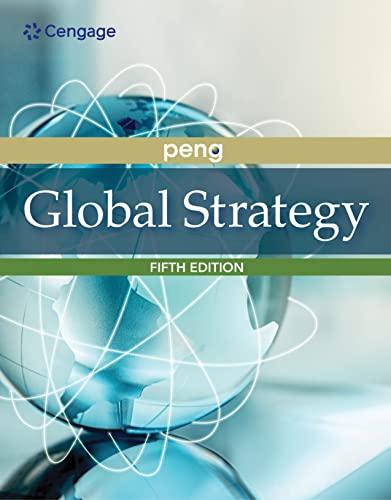Question
The story. BMW Group, owner of the BMW, Mini and Rolls-Royce brands, has been based in Munich since its founding in 1916. But by 2011,
The story. BMW Group, owner of the BMW, Mini and Rolls-Royce brands, has been based in Munich since its founding in 1916. But by 2011, only 17 per cent of the cars it sold were bought in Germany. In recent years, China has become BMWs fastest-growing market, accounting for 14 per cent of BMWs global sales volume in 2011. India, Russia and eastern Europe have also become key markets.
The challenge. Despite rising sales revenues, BMW was conscious that its profits were often severely eroded by changes in exchange rates. The companys own calculations in its annual reports suggest that the negative effect of exchange rates totaled 2.4bn between 2005 and 2009. BMW did not want to pass on its exchange rate costs to consumers through price increases. Its rival Porsche had done this at the end of the 1980s in the US and sales had plunged.
The strategy. BMW took a two-pronged approach to managing its foreign exchange exposure. One strategy was to use a natural hedge meaning it would develop ways to spend money in the same currency as where sales were taking place, meaning revenues would also be in the local currency. However, not all exposure could be offset in this way, so BMW decided it would also use formal financial hedges. To achieve this, BMW set up regional treasury centers in the US, the UK and Singapore.
How the strategy was implemented. The natural hedge strategy was implemented in two ways. The first involved establishing factories in the markets where it sold its products; the second involved making more purchases denominated in the currencies of its main markets. BMW now has production facilities for cars and components in 13 countries. In 2000, its overseas production volume accounted for 20 per cent of the total. By 2011, it had risen to 44 per cent. In the 1990s, BMW had become one of the first premium carmakers from overseas to set up a plant in the US in Spartanburg, South Carolina. In 2008, BMW announced it was investing $750m to expand its Spartanburg plant. This would create 5,000 jobs in the US while cutting 8,100 jobs in Germany. This also had the effect of shortening the supply chain between Germany and the US market. The company boosted its purchasing in US dollars generally, especially in the North American Free Trade Agreement region. Its office in Mexico City made $615m of purchases of Mexican auto parts in 2009, expected to rise significantly in following years. A joint venture with Brilliance China Automotive was set up in Shenyang, China, where half the BMW cars for sale in the country are now manufactured. The carmaker also set up a local office to help its group purchasing department to select competitive suppliers in China. By the end of 2009, Rmb 6bn worth of purchases were from local suppliers. Again, this had the effect of shortening supply chains and improving customer service. At the end of 2010, BMW announced it would invest 1.8bn rupees in its production plant in Chennai, India, and increase production capacity in India from 6,000 to 10,000 units. It also announced plans to increase production in Kaliningrad, Russia. Meanwhile, the overseas regional treasury centers were instructed to review the exchange rate exposure in their regions on a weekly basis and report it to a group treasurer, part of the group finance operation, in Munich. The group treasurer team then consolidates risk figures globally and recommends actions to mitigate foreign exchange risk.
1- whats the key market for bmw sales?
2. Why couldnt BMW just transfer the currency to its home countrys currency rather than trying to extend their manufacturing positions oversees?
3- whats the direct, indirect exchange rate?
4- explain the foreign exchange risk?
Step by Step Solution
There are 3 Steps involved in it
Step: 1

Get Instant Access to Expert-Tailored Solutions
See step-by-step solutions with expert insights and AI powered tools for academic success
Step: 2

Step: 3

Ace Your Homework with AI
Get the answers you need in no time with our AI-driven, step-by-step assistance
Get Started


